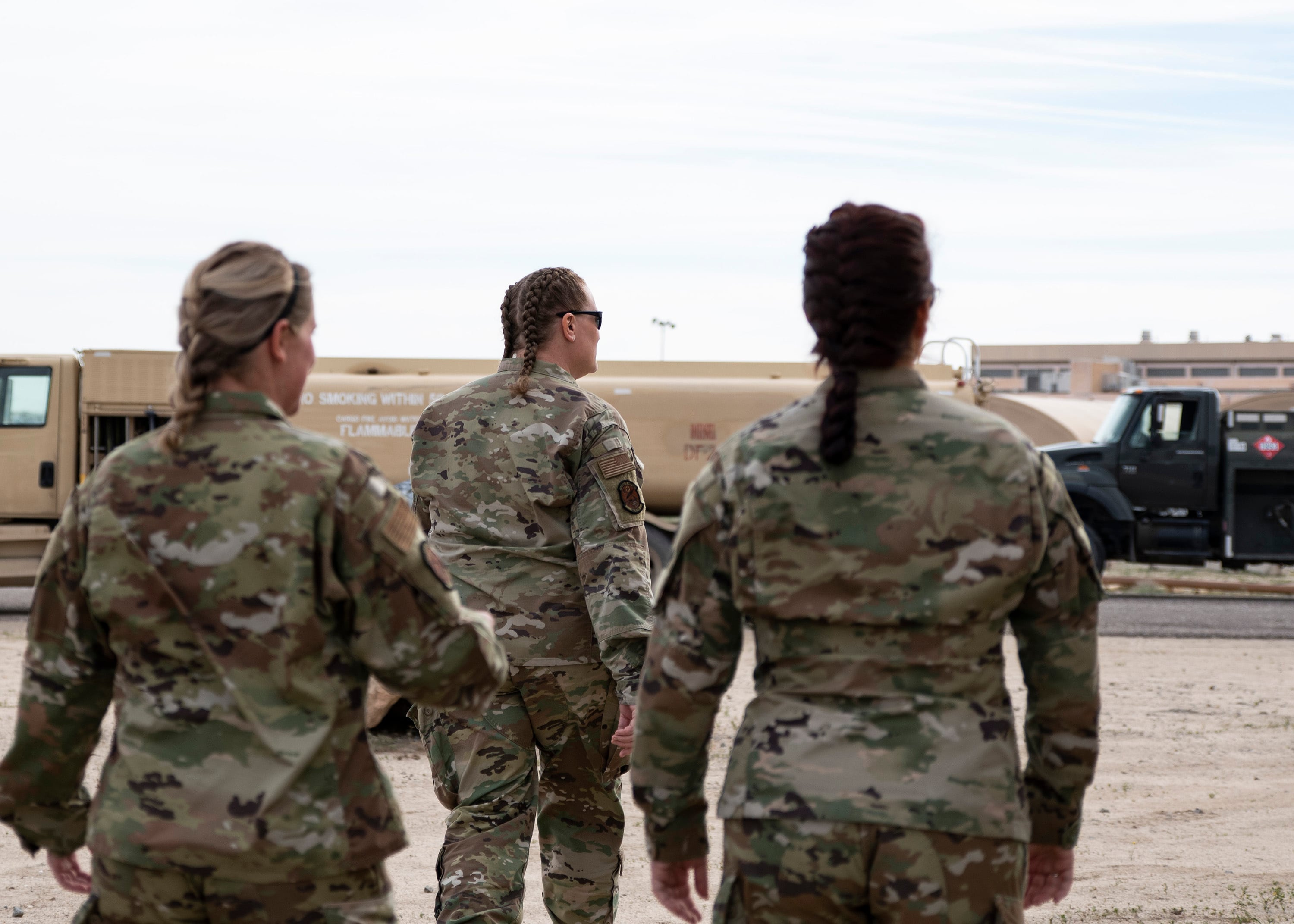Three years ago, we wrote about the changes to hair standards for women service members and the invisible labor behind this policy change. Earlier this year, the Air Force updated Department of the Air Force (DAF) Instruction 36-2903 to include visual aids to help airmen understand and implement the updated standards, both for women’s hairstyles and for other dress and appearance areas.
Yet even after three years since the updated policy came out, it seems that women’s hair standards are still a subject of debate — drawing conversations among airmen, at command town halls and even behind closed doors in senior leader conversations. Why, after years have passed, is this issue still contentious?
There are two reasons why updating women’s hair standards is a lingering conversation across the Air Force. First, updating standards within a massive institution with deeply embedded norms and complex bureaucracy is tricky business. Institutions are structures that guide behavior among the individuals in the system, and norms are the rules (implicit or explicit) shaping behavior. Changing institutions is difficult because change itself is hard — and changing an expansive bureaucratic institution like a military service branch does not happen overnight. In fact, research from McKinsey & Co. finds that 70% of change programs in an organization fail, and there’s an entire industry dedicated to change management for just this reason. But institutions do change, as we see with the ongoing DAF reoptimization for great power competition — so why is the Air Force’s hair policy so difficult?
Secondly and more specifically, women’s hair standards remain contentious because they involve changing social norms. Social norms create a shared understanding of what is acceptable in a group. It’s one thing to update Air Force bureaucracy via instructional change, but gaining buy-in from members of the group is a different story and can be strenuous to the change makers and policy approvers alike.
One way to change social norms is through modeling, but women are a minority in the Air Force and most senior Air Force leaders who are women don’t maintain long hair, leading to a lack of prolific role models to emulate. Group buy-in for this updated standard faces other challenges: Since the updated hair standards are a visible marker of change applicable to a minority population, those unaffected by the updated standard might feel resentful of the changing policy, leading to within-group fractionalization and increased conflict over the updated hair standards.
Old social norms run deep: The Air Force updated its hair policy to address systemic medical concerns and operational needs among service members, but the change transformed decades-old image expectations for servicewomen. Considering the context in which women experience harsher judgment for their appearance compared with men, a historic update in hair policy coupled with such an easily visible change exposes servicewomen to heightened criticism — and even more so when service members are not within the standard.
The way to overcome these challenges is to remember the point of standards in the first place: Military standards enable both interoperability and innovation. Aligning to a common standard for dress and appearance fosters a shared identity among all airmen, while updating these standards to foster inclusivity and promote operational readiness showcases the innovative nature of institutional change.
Offering another uniting function, the responsibility for maintaining standards is a shared one: Individual members need to understand, follow and reinforce the standard, even if the issue doesn’t apply to them directly. Commanders need to lead from the front and hold their people accountable to this mandate, creating a culture that includes respectful on-the-spot corrections for team members. Finally, senior leaders need to continue communicating the motivation behind inclusive policy change: When service members can bring their authentic selves to work, they’re better equipped to serve. In today’s global context of expanding conflict and persistent recruiting challenges, isn’t a clear path for any motivated person to join our all-volunteer force a worthy goal?
Ultimately, service members should demonstrate the same diligence that went into making the case for hair policy change by following the updated standard. Most senior leaders supported hair policy change because updating outdated standards to optimize readiness and inclusion makes sense. Moving forward, the Air Force should continue to refine and modernize policies that are outdated so that service members can be the best versions of themselves in uniform in order to execute the mission most effectively.
In the broad scheme of military operations, hair policy standards may seem minor — but this change represents how the Air Force evolves as a force and postures for future threats. The American public trusts the military because of its high standards. The Air Force can reinforce that trust by uniting behind those high standards and the shared identity of American airmen that standards promote.
Lt. Col. Kelly Atkinson, USAFR, is an admissions liaison officer at the U.S. Air Force Academy and a political scientist at RAND. Lt. Col. Alea Nadeem, ANG, is commander of the 150th Security Forces Squadron and a Women’s Initiatives Team member and prior chair. The views and opinions expressed herein are those of the authors and do not reflect the position of the Department of the Air Force or the authors’ civilian employers.




